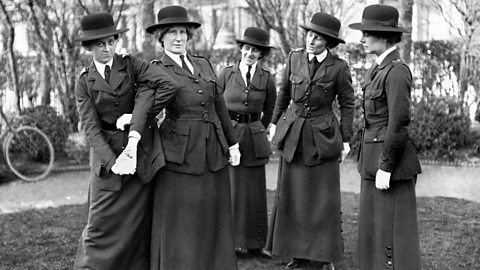In December 1914, war came to the Home Front. German warships attacked the North East coast of England, targeting Hartlepool and the fashionable resort of Scarborough. Scores of civilians were killed, including women and children.
With women now victims of enemy action, like the soldiers in France, the rallying cry became ‘Remember Scarborough!’, as scores of upper and middle-class women rushed to don uniform in the voluntary organisations. For them, it was an unrivalled opportunity to get out of the house, to do something useful, to gain independence.
First into action on the Home Front was the aristocracy - society ladies, used to using their social clout. Their young girls joined the First Aid Nursing Yeomanry. Formed before the war, and still going today, it came into its own, sending women as ambulance drivers to France. Hundreds of other volunteer organisations sprang up, such as the Women’s Volunteer Reserve, ready to do their bit, adopting military-style uniforms, to command attention and respect.
Some did skilled training in the Lady Instructors Signals Company; most though were cooking, cleaning and running errands.
Keeping a watchful eye was their Honorary Colonel, Evelina Haverfield. Evelina, the daughter of a baron, was a determined Suffragette veteran – in 1910, she was arrested for punching a policeman in the face. When charged, she replied “It was not hard enough. Next time I will bring a revolver”. Women like her were full of ideas, ready for action.
The Women’s Volunteer Reserve remained resolutely middle-class, largely because they had to buy their own uniform, which cost more than £2 – a small fortune in 1914.
Even though there was no suggestion that a woman would ever fight, the image of a woman in military-style uniform was troubling for many.
Yet the Women’s Volunteer Reserve relished the authority it gave them, despite the catcalls and jeers. It was distinctive, purposeful, and very publicly part of the war effort.
The war brought working class women to the public attention in paid often industrial work that men had left for the frontline in FranceSong: ‘Women’s Work’ by Tom Clare.
Over 1 million were engaged in war work across Britain…
Beautifully illustrated cigarette cards celebrated the variety of their work. They were doing what had previously been considered solely men’s work, getting paid the same as men was out of the question.
Skilled men feared… that their prized status would be threatened by unskilled women working alongside them, doing the same job and being paid less.
Entrenched attitudes and prejudices were at play.
Men were expected to be the breadwinners, supporting a family. Women were thought to have more modest running costs – “tea and toast are cheaper than beer and beefsteaks”, said one factory foreman.
A strong conviction remained that people should be paid not for what they did, but for who they were.
Video summary
Kate Adie explores the change of attitude in women when war arrived on the home front in December 1914, killing scores of civilians in Scarborough and Hartlepool.
They took this opportunity to do something useful and gain independence.
The aristocracy were first into action and a variety of organisations were formed sending women to France as ambulance drivers or doing skilled training, though most did cooking, cleaning and errands.
Kate talks about the women's honorary colonel Evelina Haverfield, a determined suffragette veteran and the roles the working class women took on to fill the gaps of the men away fighting.
Teacher Notes
Students could look at the different roles women took on and how they would go about forming a voluntary organisation.
What factors need to be considered?
What resources, skills etc. are required?
They could then look at how this compares to today and how attitudes have changed.
This clip will be relevant for teaching History at KS3, KS4/GCSE, in England and Wales and Northern Ireland.
Also at Third Level, Fourth Level, National 4 and National 5 in Scotland.
This topic appears in OCR, Edexcel, AQA, WJEC, CCEA GCSE and SQA.
How the suffragette movement changed at the start of WW1. video
Kate Adie examines how the suffragette movement shifted focus at the outbreak of World War One.
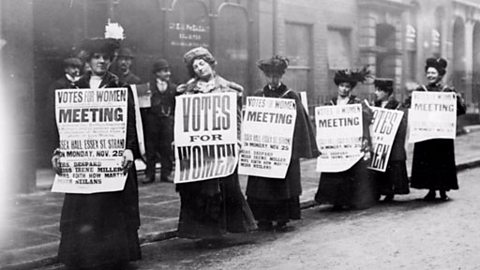
How the first women gained the right to vote in 1918. video
Kate Adie discovers how the Representation Act gave some women the right to vote at the end of Word War One.
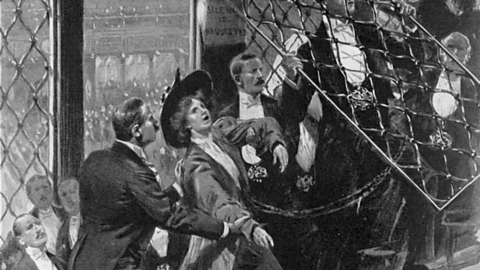
How women's football thrived in World War One. video
Kate Adie explains how women's football teams, such as The Blyth Spartans and star player Bella Raey, thrived in WW1.
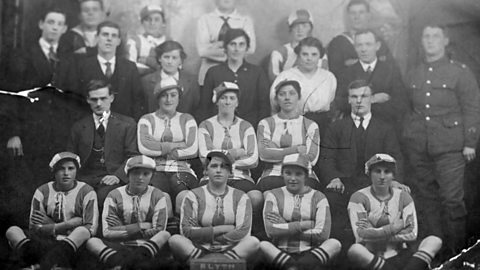
Women in medicine and health in World War One. video
Kate Adie explains how women staffed the medical services and broke down social attitudes during WW1.
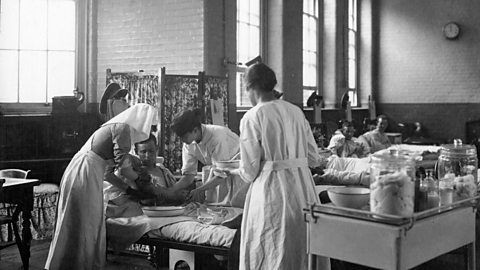
The rise of the girls' night and the first women's police force in WW1. video
Kate Adie explains the story of Margaret Damer Dawson, the Women's Police Service and the rise of the girls' night out in WW1.
